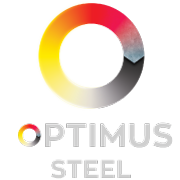Caramuru



Caramuru: Building a Pathway to Decarbonization and Sustainable Finance with SINAI
Caramuru, a large grain processor and biofuel producer in Brazil, identified climate change as an important issue in its business and wanted to take action to reduce its carbon footprint. They engaged SINAI to support them on their decarbonization journey, starting with the construction of a GHG Inventory to measure their emissions and develop a reliable decarbonization strategy. Additionally, Caramuru recently made an Export Pre-Payment Note (PPE) with sustainability-linked KPIs, including reporting goals for their GHG emissions, including scope 3 value chain emissions.
SINAI's solutions included the development of a granular GHG Inventory and screening of scope 3, which allowed Caramuru to meet their PPE requirements and begin planning to establish goals aligned with SBTi. This case study will explore three sections that delve into the results delivered by SINAI:
- Building a GHG inventory for the first time;
- Disclosing emissions that support the requirements of a PPE; and
- Working towards decarbonization.
Building a GHG Inventory for the First Time
To start its decarbonization journey, SINAI supported Caramuru in building a GHG Inventory from scratch, mapping their entire business structure to develop a granular inventory that will serve as a basis for implementing decarbonization actions. The GHG Inventory was built in time to be published for the first time in their sustainability report. This GHG Inventory was the first step for Caramuru to establish emission reduction goals and develop reliable decarbonization strategies aligned with science principles.The GHG Inventory provided Caramuru with detailed information on their emissions, allowing them to identify mitigation opportunities and establish goals to reduce their carbon footprint. By working with SINAI, Caramuru was able to develop a digitized GHG Inventory that could track their performance over time but also work with future emission projection scenarios and potential mitigation opportunities.
Disclosing Emissions and Sustainability Linked Bonds
Caramuru made an Export Pre-Payment Note (PPE) with sustainability-linked KPIs that includes as requirements a series of actions associated with climate change, including reporting their emissions. In the first year, this report only included scopes 1 and 2. In the coming years, in addition to the verification process, complete mapping of scope 3 emissions is also a requirement, which is being carried out with the support of SINAI. The report included a detailed analysis of their emissions, providing stakeholders with transparency regarding their carbon footprint. By meeting these milestones, Caramuru aims to demonstrate its commitment to decarbonization and sustainability.
Working Towards Science-Based Decarbonization
With the GHG Inventory in place, Caramuru has a basis for action on decarbonization. In the next chapter of its journey, Caramuru will work with SINAI to identify mitigation opportunities and set goals aligned with SBTi principles, working towards science-based decarbonization.
As Caramuru continues its decarbonization journey, it can reduce its carbon footprint and mitigate the risks associated with climate change, as well as identify the financial impact required for decarbonization by integrating financial planning into the climate agenda. With SINAI's support, Caramuru has the tools and information necessary to act towards decarbonization, meet the requirements of their SLB, and establish themselves as a climate change leader in their sector.
What are Sustainability Linked Bonds?
Sustainability Linked Bonds (SLBs) are a type of debt instrument that are structured to incentivize the issuer to achieve specific sustainability performance targets. Unlike traditional green bonds, which are used to finance specific environmentally friendly projects, SLBs are tied to the issuer's overall sustainability goals. The interest rate on SLBs is linked to the achievement of pre-defined sustainability targets, which can be related to a range of factors such as reducing carbon emissions, increasing renewable energy usage, improving water management practices, or enhancing social and governance standards.
SLBs can be issued by governments, corporations, or other organizations, and are becoming increasingly popular as investors are looking to support sustainable investments. In addition to providing financing for sustainable initiatives, SLBs can help to hold issuers accountable for meeting their sustainability goals and can provide a clear and transparent framework for measuring and reporting on sustainability performance.
Get The Most From Your Emission Reduction Investments With SINAI
Talk to UsOther Customer Stories
Achieve emission reduction, maximize your investment, and outpace competitors’ initiatives.


Optimus Steel partnered with SINAI to replace spreadsheet-based carbon accounting with a centralized, auditable GHG management platform. With SINAI, this transition enabled the digitization of scopes 1, 2, and 3 emissions over the last five years, and supported an inventory structure for product carbon footprint (PCF) calculations.


With SINAI, Minerva consolidated their carbon management initiatives, covering Scope 1, 2, and 3 emissions. The platform enabled bulk data uploads, advanced scenario modeling, and financial feasibility analysis. These features allowed Minerva to build a dynamic database of projects and maintain continuity in their decarbonization strategy.

.webp)
Partnering with SINAI, Wilson Sons developed a collaborative, asset-level approach to evaluate over 600 decarbonization projects. This partnership enabled the development of a reliable, cost-effective strategy to measure, monitor, and implement decarbonization initiatives, ensuring long-term sustainability and impact.
An Integrated ESG and Decarbonization Platform
Discover how SINAI’s powerful tools go beyond carbon accounting to drive actionable insights, decarbonization and compliance.







